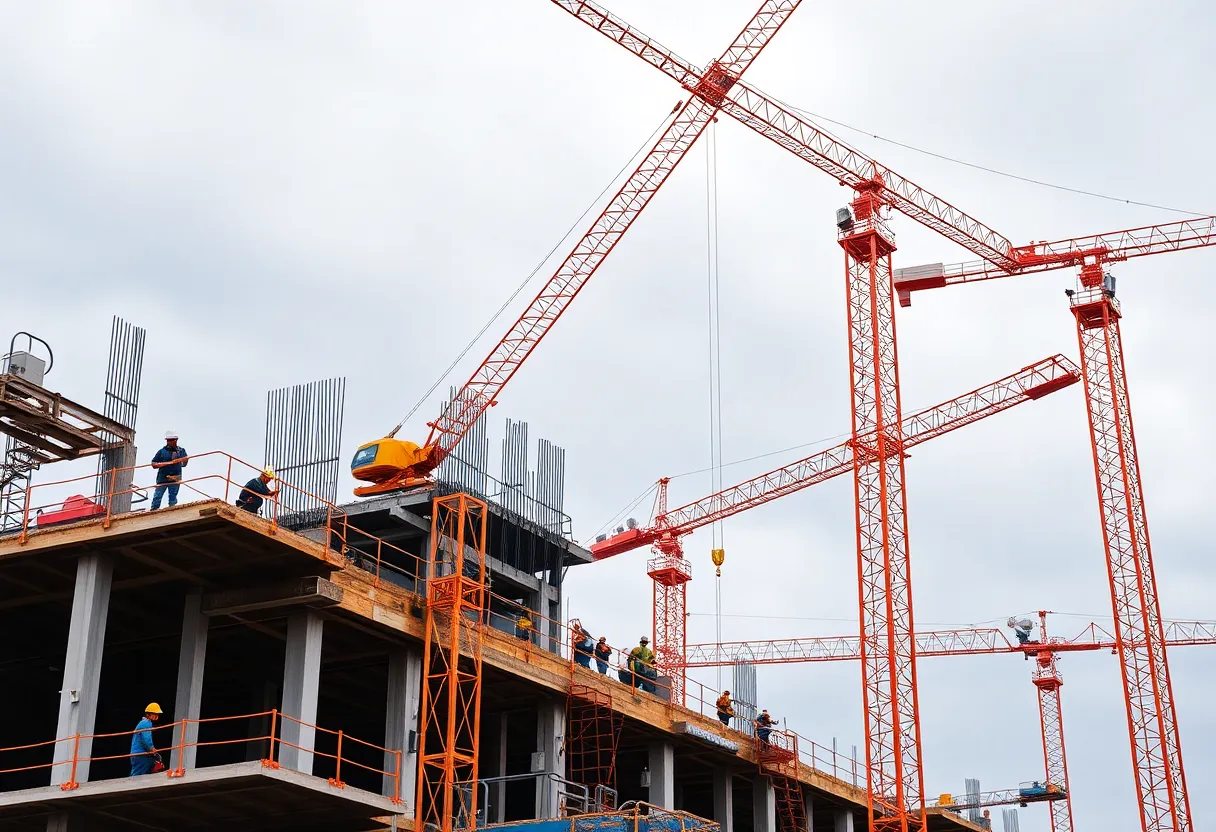News Summary
Skanska AB has reported a mixed performance for the second quarter, with revenue declining to SEK 44.6 billion. Despite a 26% drop in operating income, the construction segment showed resilience with a 3.9% operating margin. The company is focusing on operational efficiency measures, including digitalization and sustainability initiatives. However, challenges remain, including a weak housing market and labor shortages. Skanska is shifting its strategic focus to high-margin infrastructure projects while managing costs and navigating geopolitical risks. Investors are looking forward to updates in the upcoming interim report.
Skanska AB Faces Mixed Outcomes in Q2 2025 Amid Economic Challenges
Skanska AB, a prominent Swedish construction and development firm, experienced a mixed performance in the second quarter of 2025. The company’s revenue decreased to SEK 44.6 billion, down from SEK 47.4 billion during the same period last year, reflecting ongoing headwinds in the market. Despite this revenue decline, Skanska managed to maintain resilience in its operating margins within the construction segment.
Operating income for Q2 fell significantly to SEK 1.8 billion, marking a 26% decrease compared to the previous year. Yet, the company’s construction segment witnessed an increase in operating margin, rising to 3.9%, up from 3.5% in 2024. This demonstrates Skanska’s commitment to optimizing operational efficiency even amidst challenging conditions.
Strategies to Combat Inflation Pressures
To counter the impacts of high inflation, Skanska has implemented various strategies aimed at enhancing operational efficiency and stabilizing margins. The company’s rolling 12-month book-to-build ratio currently sits at an impressive 113%, indicative of robust order growth and a solid project pipeline.
Among the tactics being employed are efforts in digitalization and sustainability, which focus on reducing waste and improving workflow. Skanska has adopted Building Information Modeling (BIM) along with various automation tools to make project management more predictable and streamline processes.
Challenges in the Market
Despite these positive moves, Skanska is not immune to external pressures. The Nordic housing market continues to be weak, which has negatively impacted the company’s revenue from its residential development segment due to low consumer confidence. Additionally, high interest rates are putting a damper on opportunities in the US commercial property market, particularly for the Commercial Property Development sector.
The imposition of tariffs on imported materials, such as a 25% tariff on steel and a 14.5% tariff on lumber, has also added 5-10% to direct costs, impacting financial performance. Labor shortages, worsened by potential immigration policy changes, are raising concerns over wage increases that could further strain margins.
Positive Indicators and Long-term Strategy
Despite the prevailing challenges, Skanska’s adjusted return on equity stands at 9.5%, and the company has reported a 3.7% rolling 12-month operating margin, indicating potential signs of stabilization. The firm is adopting a strategic focus on public-private partnerships (P3s) and high-margin infrastructure projects, including a noteworthy $1.2 billion renovation of Stockholm City Hall.
Looking ahead, Skanska has a clear capital deployment strategy for 2025, concentrating on debt management and regional agility. The company’s adjusted net cash flow is reported at SEK 9.7 billion, with an equity ratio of 37%. Skanska has also aligned its debt issuances with anticipated interest rate cuts from the Federal Reserve projected later in 2025.
Dividend Considerations and Future Outlook
In its Q2 report, Skanska declared a dividend of SEK 8 per share, but this has raised questions regarding the long-term sustainability of such dividends in light of falling profits. Investors are eagerly anticipating the next interim report scheduled for May 7, 2025, which aims to shed light on cost management and dividend sustainability.
While Skanska faces various challenges, including labor and material cost volatility, the company’s operational agility, margin management, and capital discipline suggest it is well-positioned to navigate the current macroeconomic landscape. With its valuation at the low end of its historical range, there may be investment opportunities on the horizon.
As the company continues to make strides towards stability, close attention remains on how it sustains its performance amidst ongoing economic uncertainties.
Deeper Dive: News & Info About This Topic
Additional Resources
- Ainvest: Skanska Q2 2025 Performance
- New Civil Engineer: Skanska Wins £153m Contract
- Construction Digital: Skanska Reports on Opportunities
- Wikipedia: Skanska
- Google Search: Skanska AB performance 2025
Author: Construction CA News
The CALIFORNIA STAFF WRITER represents the experienced team at constructioncanews.com, your go-to source for actionable local news and information in California and beyond. Specializing in "news you can use," we cover essential topics like product reviews for personal and business needs, local business directories, politics, real estate trends, neighborhood insights, and state news affecting the area—with deep expertise drawn from years of dedicated reporting and strong community input, including local press releases and business updates. We deliver top reporting on high-value events such as the Rose Parade, Coachella, Comic-Con, and the California State Fair. Our coverage extends to key organizations like the California Building Industry Association and Associated General Contractors of California, plus leading businesses in technology and entertainment that power the local economy such as Apple and Alphabet. As part of the broader network, including constructionnynews.com, constructiontxnews.com, and constructionflnews.com, we provide comprehensive, credible insights into the dynamic landscape across multiple states.




